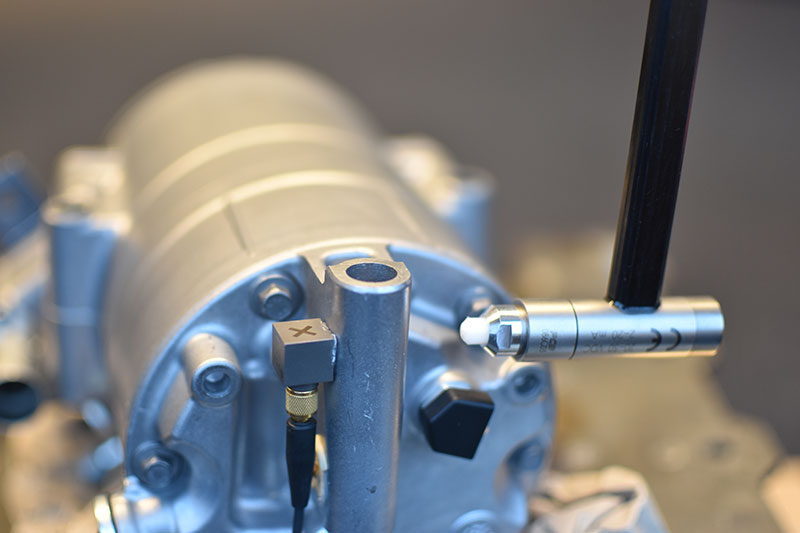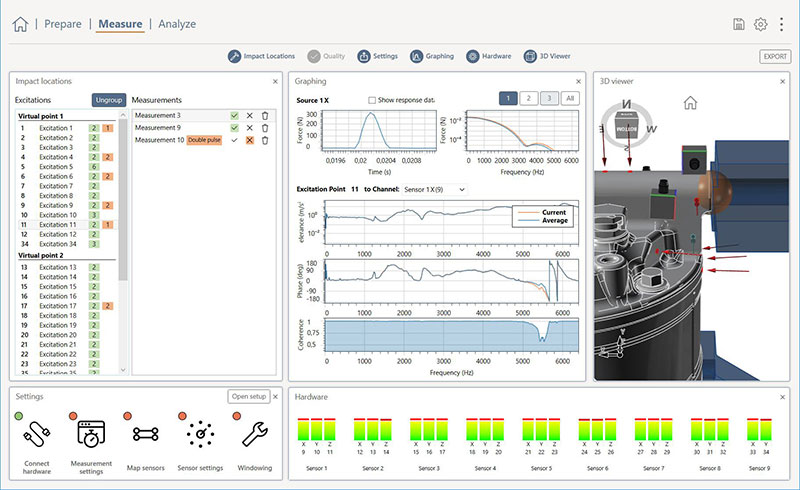Case study steering gear – DIRAC
31 July 2019
Using DIRAC’s Virtual Point Transformation, OEMs can now predict in-vehicle Electric Power Steering sound & vibration performance based on supplier data and vehicle noise transfer functions.
The project
For a German automotive OEM, VIBES engaged in a project analyzing the Electric Power Steering (EPS) system as a noise source. The motor and transmission parts generate vibrations, that propagate into the vehicle’s interior through several structural paths, causing modest levels of noise.
The growing electrification of vehicles – and therefore the absence of the internal combustion engine (ICE) – makes the EPS becomes more apparent as a noise source in the interior of the vehicle. With the product fleet expanding rapidly, the number of ‘EPS vehicle’- combinations increases too, such that it becomes impossible to test all combinations on the road.
Rather than testing each combination in the vehicle, VIBES introduced Substructuring Technology, enabling to test each EPS system separately on a test bench and simulate the in-vehicle NVH performance using accurate noise transfer functions (NTFs) of different vehicle models. This separation is enabled by the Virtual Point Transformation. The Virtual Point provides the common interface between the test bench and the vehicle chassis connection points.
The goals
- Characterize the active vibrations of EPS systems using blocked forces and moments in the (virtual) coupling points, measured on (but independent from) the test bench.
- Simulate the in-vehicle noise at the driver’s ear by combining these blocked forces and moments with vehicle NTFs, obtained once for each vehicle platform.
To put the above in a quantitative context, it amounts to measuring N EPS systems on a test bench plus obtaining M different vehicle NTFs, instead of needing to test the entire matrix of N x M combinations. For 6 EPS systems and 3 vehicle models, this already reduces the measurement effort by 50%!
The approach
This project was executed following steps 1 to 6 of the Source Characterization Workflow. An important and key aspect of the measurements is the design of the supporting structure of the EPS in the testing environment. The test-rig supports had to be carefully engineered to ensure it was strong enough to bear the load (axial) of the actuators when exerting a realistic tie-rod force on the EPS. Secondly, the dynamic behavior of the EPS on the bench had to show a good signal-to-noise ratio. Therefore, the supports were modeled in a Finite Element package to check whether the design filled the requirements.
DIRAC was used to prepare, measure and analyze the FRF measurements. While performing the actual measurement, every single measurement point was evaluated on the fly using virtual point technology and quality indicators. This ensured that the resulting FRF-matrix was suitable for the characterization of the EPS with blocked forces. The vehicle’s noise transfer functions – from the EPS coupling points to the microphones at driver’s ears position – were measured with DIRAC too. Using the virtual point transformation, the transferability of the blocked forces was ensured, as the EPS points collocate.
The results
The key results in the project:
- Overall resources are reduced (the measurement effort is reduced by >50%) and the NVH evaluations of all EPS-vehicle combinations are performed efficiently without actually mounting each EPS in the vehicles.
- Improved quality of the NVH prediction in a large frequency range (multiple kHz), as the EPS is tested in a controlled environment, thereby avoiding external (noise) disturbances.
- New EPS variants can be quickly evaluated in all vehicle models using already existing vehicle NTFs, greatly benefiting early-phase development.


